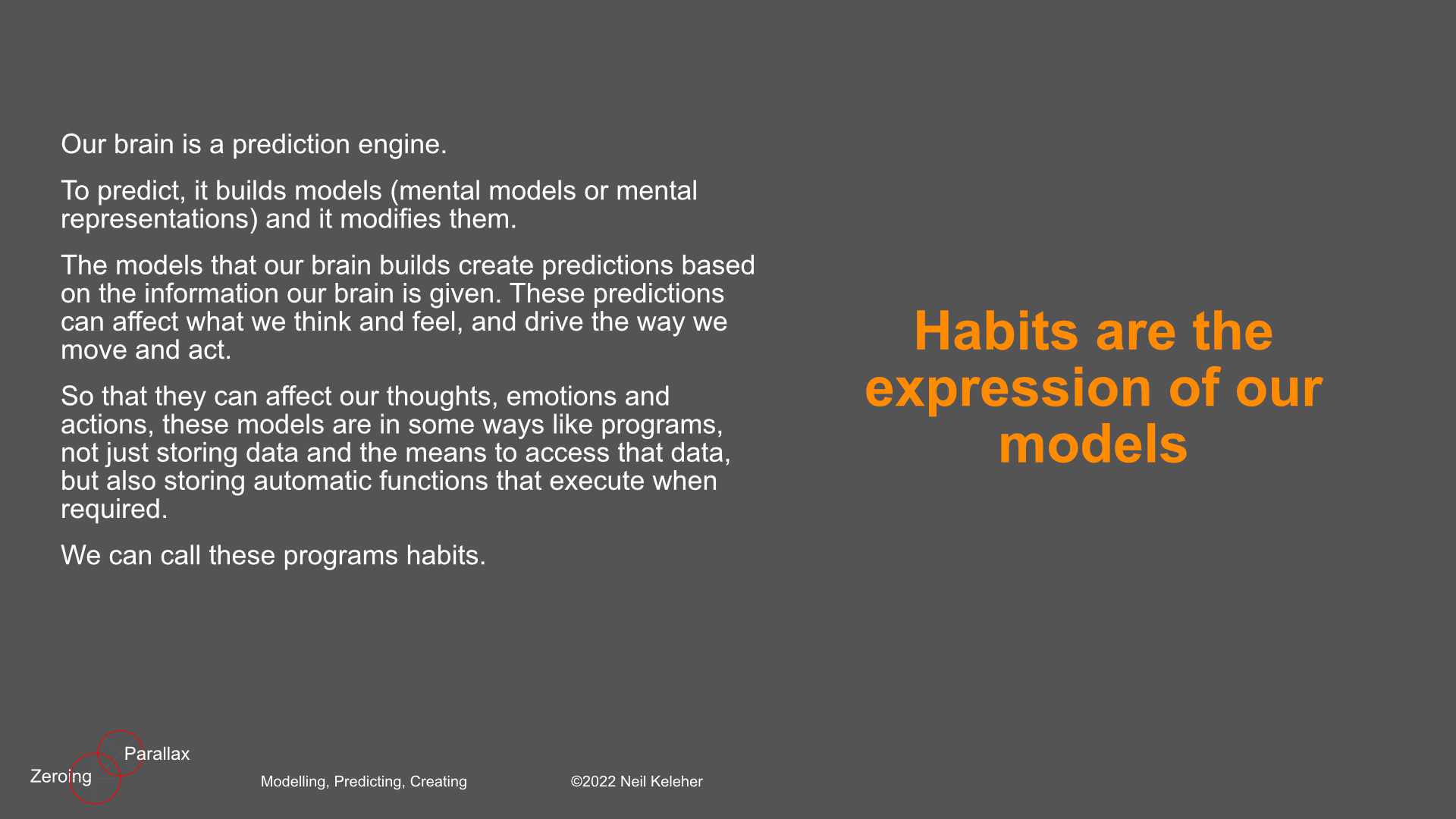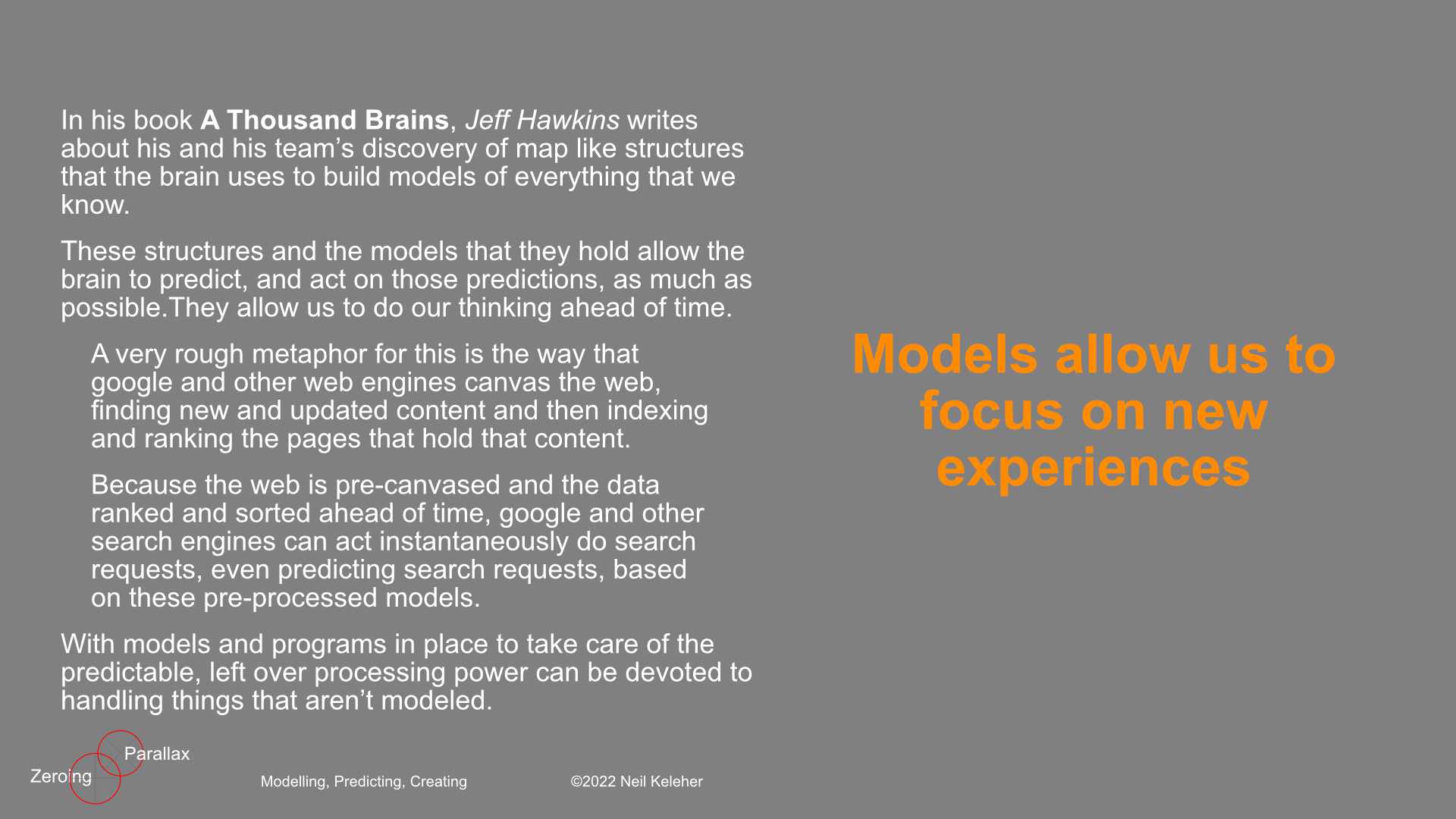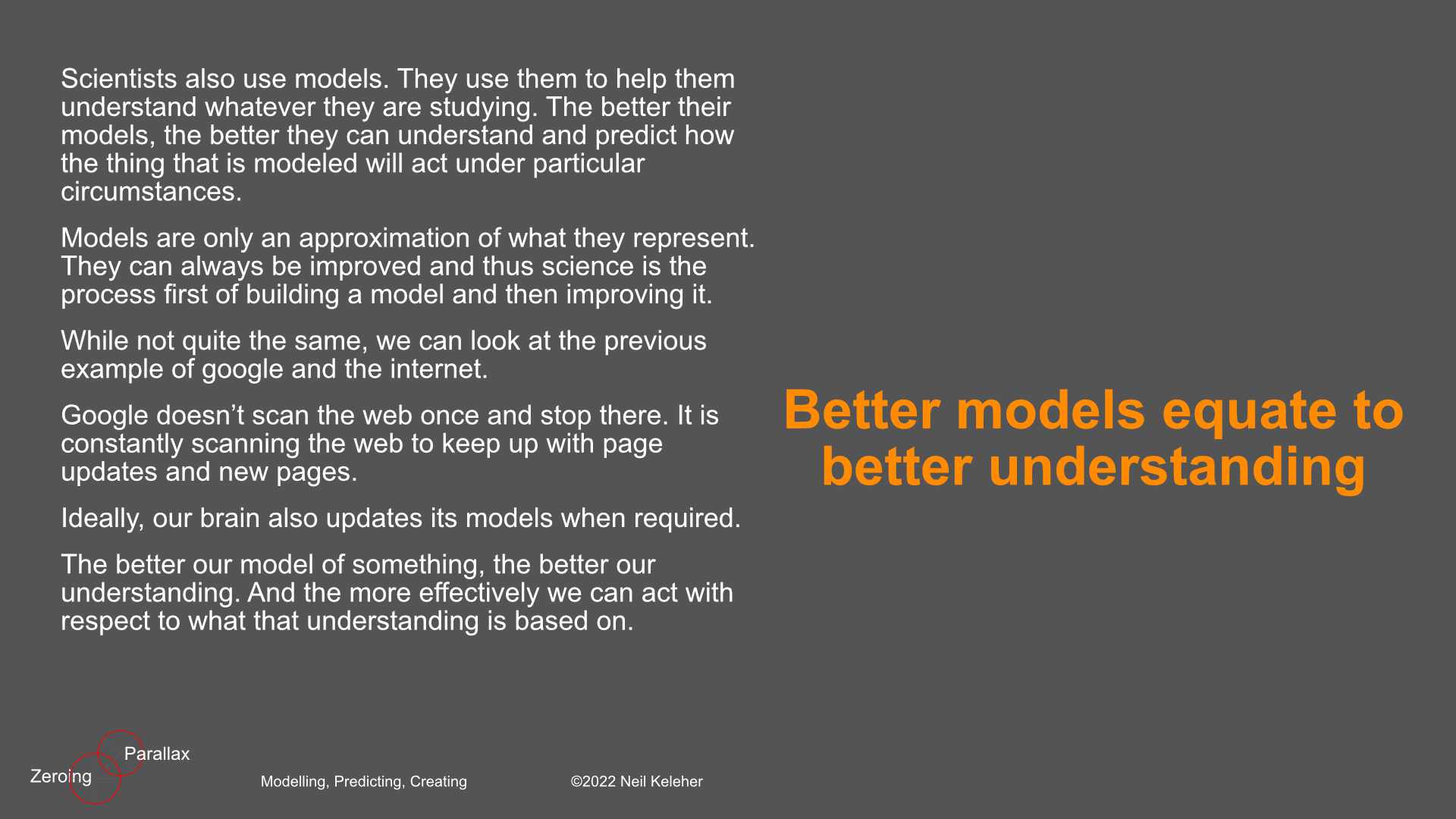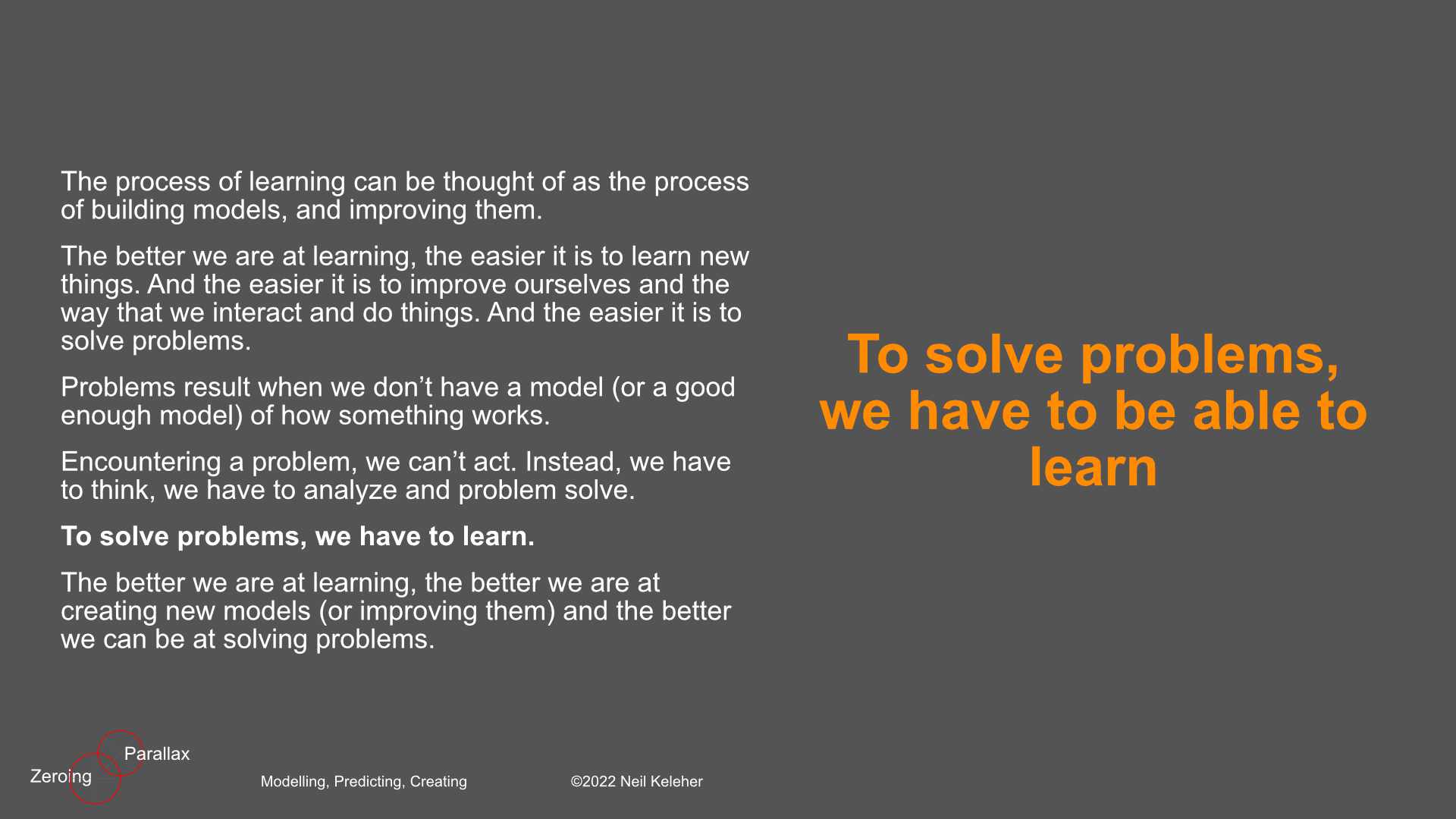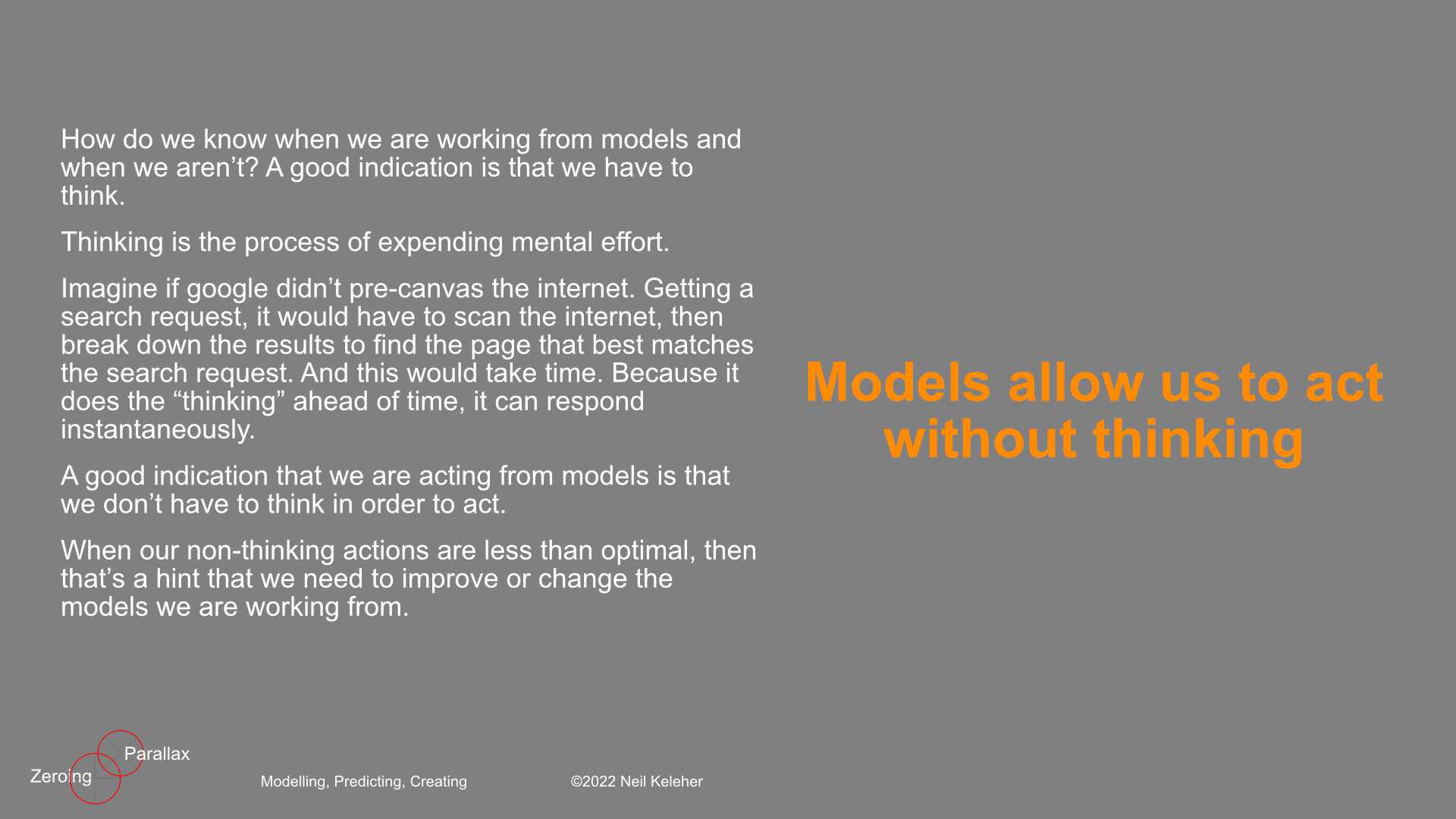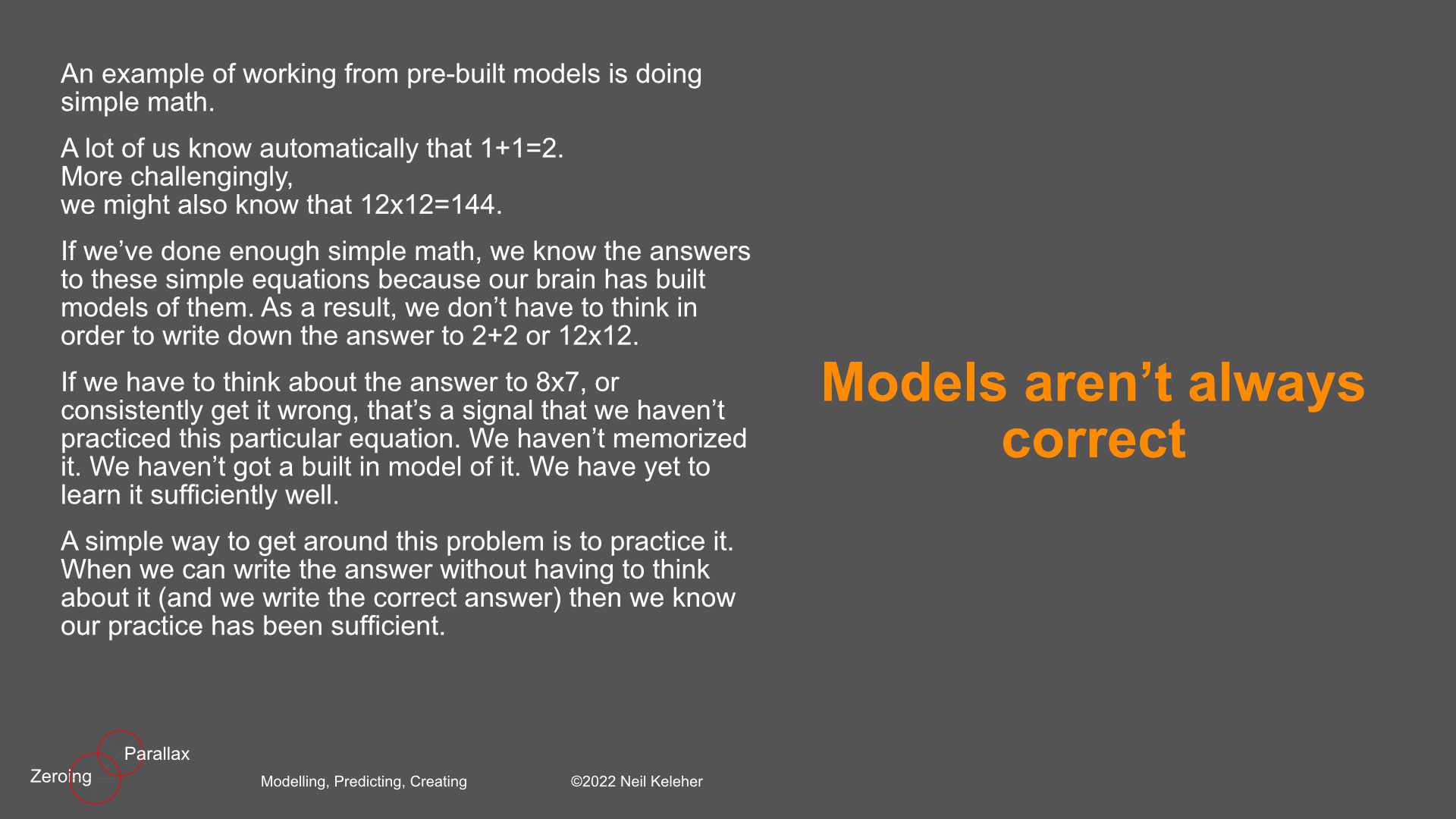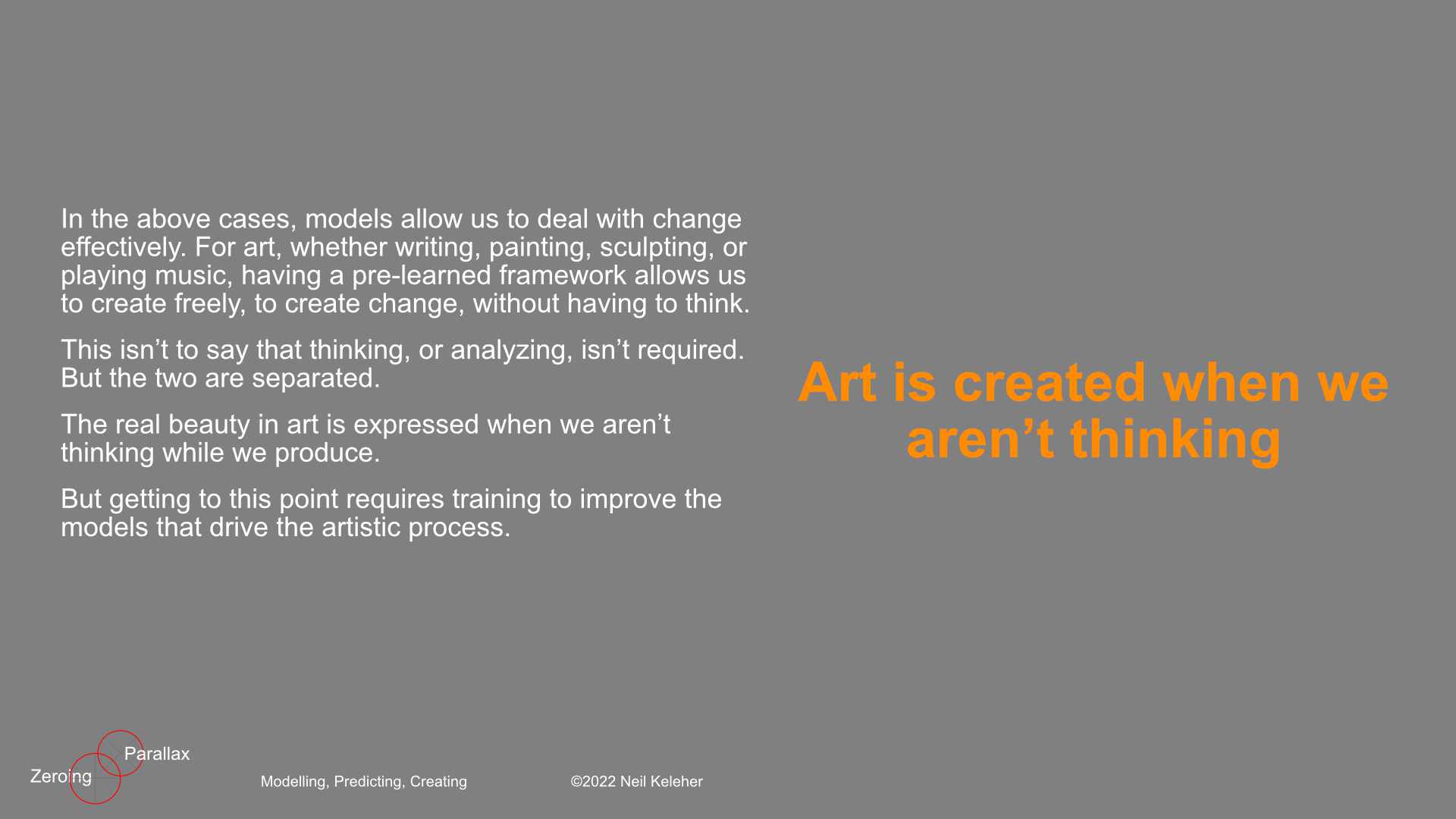Modeling, Predicting, Creating
Habits are the expression of our models
Our brain is a prediction engine.
To predict, it builds models (mental models or mental representations) and it modifies them.
The models that our brain builds create predictions based on the information our brain is given. These predictions can affect what we think and feel, and drive the way we move and act.
So that they can affect our thoughts, emotions and actions, these models are in some ways like programs, not just storing data and the means to access that data, but also storing automatic functions that execute when required.
We can call these programs habits.
Models allow us to focus on new experiences
In his book A Thousand Brains, Jeff Hawkins writes about map like structures and reference frames that the brain uses to build models of everything that we know.
These structures and the models that they hold allow the brain to predict, and act on those predictions, as much as possible.
The models our brain builds allows us to do our thinking ahead of time.
A very rough metaphor for this is the way that google and other web engines canvas the web, finding new and updated content and then indexing and ranking the pages that hold that content.
Because the web is pre-canvased and the data ranked and sorted ahead of time, google and other search engines can act instantaneously do search requests, even predicting search requests, based on these pre-processed models.
With models and programs in place to take care of the predictable, left over processing power can be devoted to handling things that aren't modeled.
Better models equate to better understanding
Scientists also use models. They use them to help them understand whatever they are studying. The better their models, the better they can understand and predict how the thing that is modeled will act under particular circumstances.
Models are only an approximation of what they represent. They can always be improved and thus science is the process first of building a model and then improving it.
While not quite the same, we can look at the previous example of google and the internet.
Google doesn't scan the web once and stop there. It is constantly scanning the web to keep up with page updates and new pages.
Ideally, our brain also updates its models when required.
The better our model of something, the better our understanding. And the more effectively we can act with respect to what that understanding is based on.
The better our models, the better our experiences
Our brain is like our own built in scientist. It builds and modifies models so that it can continuously make predictions and act according to those predictions. However, rather than being outside of the experiment it runs, it is actually at the center of it.
And this too in a way is like google.
Rather than being outside of the internet, it is a part of it. And though it models the web, it also serves as a doorway or network of portals to the web, allowing us to find what we are looking for with a minimum of thought or effort.
The stuff that our brain models isn't limited to things outside of ourselves. It also models our body, our mind and how we ourselves interact with what is around us, or can do.
We can then look at our brain as a portal that allows us to interact with our body, and via it, the world around ourselves. The better our brain models our body, and the world, the better we can interact with our body and the world.
To solve problems, we have to be able to learn
The process of learning can be thought of as the process of building models, and improving them.
The better we are at learning, the easier it is to learn new things. And the easier it is to improve ourselves and the way that we interact and do things. And the easier it is to solve problems.
Problems result when we don't have a model (or a good enough model) of how something works.
Encountering a problem, we can't act. Instead, we have to think, we have to analyze and problem solve.
To solve problems, we have to learn.
The better we are at learning, the better we are at creating new models (or improving them) and the better we can be at solving problems.
Models allow us to act without thinking
How do we know when we are working from models and when we aren't? A good indication is that we have to think.
Thinking is the process of expending mental effort.
Imagine if google didn't pre-canvas the internet. Getting a search request, it would have to scan the internet, then break down the results to find the page that best matches the search request. And this would take time. Because it does the ""thinking"" ahead of time, it can respond instantaneously.
A good indication that we are acting from models is that we don't have to think in order to act.
When our non-thinking actions are less than optimal, then that's a hint that we need to improve or change the models we are working from.
Models aren't always correct
An example of working from pre-built models is doing simple math.
A lot of us know automatically that 1+1=2.
More challengingly, we might also know that 12x12=144.
If we've done enough simple math, we know the answers to these simple equations because our brain has built models of them. As a result, we don't have to think in order to write down the answer to 2+2 or 12x12.
If we have to think about the answer to 8x7, or consistently get it wrong, that's a signal that we haven't practiced this particular equation. We haven't memorized it. We haven't got a built in model of it. We have yet to learn it sufficiently well.
A simple way to get around this problem is to practice it. When we can write the answer without having to think about it (and we write the correct answer) then we know our practice has been sufficient.
Learning a System vs Learning a System of Procedures
This idea of working from pre-built (pre-thought) models also applies to more complex systems.
Someone who knows a reasonably complex system well enough doesn't have to consult a manual in order to figure out why that system isn't working. Instead, they can tour the model of that system that is in their head.
They can step through the system, to figure out the source of any physical problems.
Someone could memorize a procedure to go through in order to deal with problems. This memorized procedure is a model. But it isn't the same as a model of the actual system.
The advantages of learning an actual system versus a procedure for dealing with problems for that system is that with the model of the actual system, you can fault find problems that aren't covered by the procedure.
The advantage of learning procedures are that it is easier because you don't have to learn the system.
Pre-Thought Modular System Models
For artists, aka creators, the idea of models also applies. We can use math again as an analogy.
With math there are subjects like trigonometry and calculus where you memorize procedures or algorithms or a series of steps to carry out in order to deal with different problems. Learned well enough, we don't have to think when dealing with particular math problems, we simply carry out the steps that we've practiced and learned.
Driving is a similar process. If we've learned the basics of driving a car (or riding a motorcycle) we don't have to think in order to operate the vehicle. We can focus on the road and what is on it. The models that we've learned, the elements of driving, allow us to act in accordance with what we sense on the road and in accordance with where we are going.
The models we learn in these cases could be thought of as frameworks. Or they can be thought of as modular systems, with the appropriate module activating when required. In either case, they allow us to act appropriately without the need for thought. The thought is done ahead of time, while creating the modules.
Art is created when we aren't thinking
In the above cases, models allow us to deal with change effectively. For art, whether writing, painting, sculpting, or playing music, having a pre-learned framework allows us to create freely, to create change, without having to think.
This isn't to say that thinking, or analyzing, isn't required. But the two are separated.
The real beauty in art is expressed when we aren't thinking while we produce.
But getting to this point requires training to improve the models that drive the artistic process.
Models allow us to respond and create without the need for thought
Our brain is a prediction engine. It builds models (and improves them) to predict.
With models we can act without thinking. We can respond effectively to whatever is happening now whether driving, solving simple math problems, solving math problems, experiencing life and responding to it.
Learning is the process of building (and improving) models.
With models, the thinking is done ahead of time.
With the ability to learn we can build models to understand systems so that we can solve problems.
With models, we can act creatively.

